“The Unenthusiastic Critic” is a special series in which my highly reluctant girlfriend “N.” joins me to watch classic movies that she has somehow managed to avoid seeing. In a very special series within this very special series, N. has agreed to watch as many horror movies as we can fit in between now and All Saint’s Day. That N. really hates horror movies, is easily freaked out, and will almost certainly have nightmares all week long, makes her participation all the more admirable…and dumb…and potentially amusing.
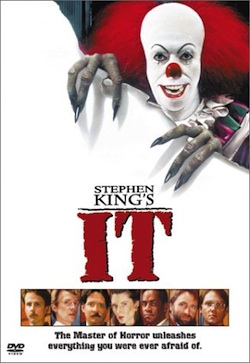 Film: It, aka Stephen King's It (to distinguish it from such classics as Bertolt Brecht's It or Erica Jong's It, I suppose). Directed by Tommy Lee Wallace; written by Wallace and Lawrence D. Cohen, based on the novel by Stephen King. Starring Richard Thomas, Annette O'Toole, John Ritter, Harry Anderson, Tim Reid, Dennis Christopher, Richard Masur, and Tim Curry.
Film: It, aka Stephen King's It (to distinguish it from such classics as Bertolt Brecht's It or Erica Jong's It, I suppose). Directed by Tommy Lee Wallace; written by Wallace and Lawrence D. Cohen, based on the novel by Stephen King. Starring Richard Thomas, Annette O'Toole, John Ritter, Harry Anderson, Tim Reid, Dennis Christopher, Richard Masur, and Tim Curry.
Why I Chose It: Though I had made a conscious decision to mix up the eras, styles, intensities, and kinds of horror movies we'd watch during this marathon—and therefore thought a cheesy TV movie might make a nice change of pace—It is still a strange choice. This wasn't a movie that I remembered with particular fondness: I was in college when It was broadcast as a two-night special event on ABC Network television in November 1990, and I almost certainly didn't see it until many years later. I didn't remember much about it before we decided to watch it for this blog, but I also didn't remember particularly liking it. It was never my favorite of King's works, and taking a 1,100 novel about small-town evil—one full of sex and violence—and turning it into a 180-minute movie for a family television audience was not the way to make it better.
(Had I been going for TV adaptations of Stephen King that traumatized me as a child, I would have—and, as it turns out, should have—gone for Tobe Hooper's 1979 adaptation of Salem's Lot. I haven't seen that in 20 or 30 years either, and it probably doesn't hold up, but searching online I'm relieved to see that this is still scary. )
So why did we choose to watch It for this blog? The answer lies in three little words: "Pennywise the Clown." The one thing I did remember about It was Tim Curry's performance as the villain of the piece. (In fact, I find that is the only thing anyone remembers about the movie version of It.) I think we can all agree that clowns are scary as hell to begin with, and I remembered Curry's turn as a transmogrifying, sewer-dwelling, serial-killing clown as a campy, creepy delight.
In short, the reason I made the mistake of choosing It over Salem's Lot boils down to one thing: I knew that my girlfriend was scared of clowns.
What My Girlfriend Knew About It Going In: N. was actually a better age to have seen It as a child than I was—she was eight years old in November 1990—but she never saw it.
She: I'm sure my mother probably watched it, but I wasn't there for it. I seem to remember hearing something about deadly cotton candy? Or something?
Me: Um…I don't remember that, but it's certainly possible. [Note: In fact, it turns out N. was mixing this up with the seminal 1988 masterpiece Killer Klowns from Outer Space.]
She: And the "Sweet Transvestite" plays the clown, right? Does he have any musical numbers?
Me: Again, my memory is hazy, but I wouldn't be entirely surprised.
However, as luck would have it, N. has memories of something else that could make It particularly effective for her:
She: Do you remember "Homey the Clown," from In Living Color? Growing up, when I was in elementary school in East Chicago, there were tales of someone dressed as "Homey the Clown" who was going around snatching kids, or killing kids, or eating kids, or something. And I actually don't know if it was real or if it was an urban legend, but I remember all the parents bought into it too. We weren't supposed to be outside too long, and we were supposed to keep our eyes out for any suspicious clowns.
Now, normally, when this type of thing comes up, I just assume my girlfriend is insane. However, there does seem to be documentation of this phenomenon, here. Someone, somewhere, could probably do a fascinating sociological case study on how the combination of the John Wayne Gacy case, In Living Color, and It all combined to create an urban legend around an evil clown preying on the children of East Chicago. However it happened, I go into our viewing perversely thrilled to think that It may tap into one of my girlfriend's primal childhood fears.
(Does that make me a bad person?)
How It Went: It was three hours of our life that we'll never get back.
I'm going to try to keep this post much shorter than usual, because I'm already behind schedule on writing up our "Seven Nights of Halloween" marathon, and because It is really kind of awful.
It opens with an adorable little girl riding her tricycle and singing "Itsy Bitsy Spider." (Spoiler alert: three hours from now, when we get to the ending of It, this will turn out to have been "foreshadowing." However, by then we'll both be so far beyond caring that it will be completely lost on us.)
She: You know what is scary? A little kid riding a bike doing that sing-song nursery rhyme chanting that evil children do in evil movies.
Me: You think all kids are creepy.
But this child is not evil; this child is toast. Soon she encounters a mysterious clown in her backyard, and she screams; we don't see what happens to her—because this is network television, after all—but we see her tricycle laying on its side with its wheels still spinning, a film cliche that is instantly recognizable:
She: Oh, bike on its side means dead kid.
Me: Yeah, she's dead. Are you happy now?
She: Yes. Yes I am.
 Town Librarian Mike Hanlon (Tim Reid) recognizes the signs of evil, and summons all his old friends back to town, calling them one by one to tell them that "It" is back. Oddly, most of Mike's childhood friends turn out to have aged into out of work TV actors: Mike himself is Venus Flytrap from WKRP, of course, and his other friends include John Boy Walton (Richard Thomas), Judge Harry Stone (Harry Anderson), Jack from Three's Company, Bonnie Franklin's boyfriend from One Day at a Time (Richard Masur), and other familiar faces.
Town Librarian Mike Hanlon (Tim Reid) recognizes the signs of evil, and summons all his old friends back to town, calling them one by one to tell them that "It" is back. Oddly, most of Mike's childhood friends turn out to have aged into out of work TV actors: Mike himself is Venus Flytrap from WKRP, of course, and his other friends include John Boy Walton (Richard Thomas), Judge Harry Stone (Harry Anderson), Jack from Three's Company, Bonnie Franklin's boyfriend from One Day at a Time (Richard Masur), and other familiar faces.
Bill (Thomas) for example, is a successful horror writer living in England with his beautiful actress wife. ("You should be nice to someone who loves you in spite of that ponytail," N. admonishes him.) When he gets the phone call from Mike, he starts stuttering and stammering: Thomas's stammer, alas, is about as convincing as everything else in It.
We see each of the friends get the news in turn. Ben (Ritter) is an award-winning architect (though a bit of a drunk). Bev (O'Toole) is a fashion designer, involved with an abusive man. Richie (Anderson) is a wildly-successful—and, based on the evidence, wildly unfunny—comedian. Eddie (Dennis Christopher) is a fragile looking man with imaginary asthma who lives with his mother and owns a limousine company. Stan (Masur) is a happily married accountant.
What all of these characters have in common—besides the homicidal magical clown in their past—is that they are all unusually successful, none of them have children, all have very bad hair, and each exhibits a penchant for what my girlfriend calls "touch my face" acting. (Which is not to be confused with "smell the fart" acting, though there's a lot of that on display here too.) Seriously, the director had one direction for when the characters were supposed to be freaked out: "Why don't you try touching your face to show how scared you are. Yeah, that works!")
("I'm surprised they don't all have acne," N. says. "That's how you get acne, by touching your face too much.")
It is split into two parts: the first part (and the best part) focuses mostly on the characters as children in the late '50s, when they first become aware than an evil, near-omnipotent clown is feasting on their schoolmates. Bill's little brother Georgie (Tony Dakota) is the first—and most memorable—of the victims: Bill has given Georgie a boat made out of newspaper, and sent him off into the rain to play with it. When the boat goes down a street drain, Georgie seems fairly nonplussed to encounter a brightly-colored clown lurking below.
"DON'T TALK TO SEWER CLOWNS!" my girlfriend screams. Good advice for all situations, but Georgie doesn't listen, alas.
In a series of flashbacks (while the adults are touching their faces), we see how the kids all came together around their misfit status and their encounters with the evil clown. It is supposed to be about the fears and beliefs of childhood—a subject King knows well—and the best parts of both the book and the movie deal with the secret worlds of these kids, and the horrors (both natural and supernatural) in their lives.
The kids—let's be honest—are also better actors than the adults, for the most part. (There are exceptions I'm too charitable to mention.) The young Ben (Brandon Crane) is particularly strong, as is the young Bev (Emily Perkins). (Of the child actors, only Seth Green—as young Richie—became a star, and he was already well on his way when It premiered.)
We see a series of scares in which Pennywise takes the form of things that scare the children: Richie is attacked by a teenaged-werewolf, Stan is attacked by the Mummy, etc. In this book these scenes almost worked, as an homage to '50s horror movies and a representation of childhood anxieties; in the movie, however, they don't work at all, owing to the low-budget effects and Wallace's ham-fisted direction. (The werewolf that attacks Richie looks less real than the one in "I Was a Teenage Werewolf," for example.) On the other hand, some of the smaller scares work well: the film is most effective when dealing with the things the kids can see that adults can't, as in the scene where Bev's father can't see that she and their bathroom are both totally covered in blood.
(On the other hand, some scenes don't work at all. Young Eddie [Adam Faraizl]—who is a thin, effeminate mama's boy—is menaced by incredibly phallic looking shower heads that elongate in size and protrude from the walls of the boys' locker room. Metaphor much?)
The kids eventually form a tight-knit circle that they dub "The Loser's Club," and decide to take the battle to It in the sewers. There Bev shoots the clown with a silver bullet (okay, a silver slug from her slingshot), and It's head splits open in a burst of light. ("Deadlights," they call it, in one of those repeated phrases King likes to use that sound creepy but ultimately mean nothing.) The kids think they've killed It, but solemnly swear to return if the pasty bastard ever surfaces again.
It turns out Stan is the only member of the adult Loser's Club that can't quite muster the strength to fulfill that promise: Part One ends with Stan's wife discovering that her husband has slit his wrists in the bathtub, scrawling IT on the wall in his blood. (As suicide notes go, this is neither eloquent nor comforting; on the other hand, writing in your own blood probably does not inspire prolixity.)
"Why must you bring these things into my life?" N. asks me, as we switch discs.
[I want to take a moment to note here that I give my girlfriend the option of NOT watching the second half of It: I didn't remember much about it, but I remembered enough to know that it wasn't going to get any better. But she rejects my offer: "I need closure," she says, which is not something she ever said when we watched Star Wars.]
But we're going to dispense very quickly with the second half of It, since it is by far the weaker portion: the children are simply more interesting. The children, unlike the adults, also seem like they are really friends: one suspects that the child actors might have had some time to hang out together on the set, while the "big stars" flew in for a few days work. Reid isn't bad—though he's given the least to do—and O'Toole has a few moments, but the rest of the cast is pretty terrible.
But the bulk of the blame has to fall on Wallace: the fact that It represents the pinnacle of his directing career—among a lot of forgotten TV movies and direct-to-DVD sequels—says a lot about his talent: he simply didn't have any. There is no atmosphere, no care taken with angles or framing, and every single shot and performance is literal and obvious. It's hackery, pure and simple, and this might explain why the cast all look like they'd rather be somewhere else.
It's hard to pick a highlight—lowlight, deadlight—of the second half: is it Ben making out with Bev, who turns out to really be Pennywise the Clown? Is it Stan's head turning up in the refrigerator of the public library? For me, it is probably the scene in a Chinese restaurant, in which the friends open their fortune cookies to find disgusting things inside. Watching them pretend to recoil in horror from the fake-looking eyeballs, spiders, and bird fetuses they crack open is laughable and kind of embarrassing.
Most people agree that Tim Curry's Pennywise is the best part of It, so—naturally—the climax leaves him out entirely. The adults venture back into the sewers to confront the true face of It: a giant, stupid looking spider. Seriously, as N. points out, this thing wouldn't cut mustard in Clash of the Titans, and if there were any hope that the final showdown was going to be scary, it is stomped dead by those eight lurchy, stop-motion legs crawling unconvincingly across the screen. Nor is the ending in any way satisfying, as Bev once again wounds the beast with her slingshot, and then the group attack it with their fists, beating it to death with their bare hands. (Bill seems to remove it's heart and hold it up in triumph.) It's a really bad idea to have the final form your shape-changing villain takes be both its weakest and its most ludicrous. (Surely, if beating it up was an option, that would have been easier when it was pretending to be a clown, an old lady, or Bill's little brother?)
Happy ending achieved—we get nice epilogues about all the characters (except for Eddie, who died from imaginary asthma)—the movie ends.
The Verdict
So here's the thing about Stephen King: the monsters and scares are not why he's such a success. King's books don't break a lot of new ground on the scare-front: he's mostly recycling old school monsters—vampires, werewolves, zombies—and in It part of the point was to use these '50s monster movie figures as a way to explore childhood fears. The thing that makes King's books work, however, is his characterization: his people seem like real people, caught in extraordinary situations. (It's no coincidence that the best movies based on King's works—from Carrie and The Shining to Stand by Me, Misery, and The Shawshank Redemption—are primarily character pieces, not big sprawling epics.) It wasn't 1,100 pages long because it was chock full of eyeballs and spiders, but because King spent time—more than in any of his novels besides The Stand—creating real characters that the reader could understand and care about.
So adapting It into a movie was always going to be a doomed enterprise, and having a hack director adapt it on no budget for television was one of the stupidest fucking ideas since King himself decided to direct Maximum Overdrive. It simply couldn't be done without removing everything that made the book work, including the real horror, the sex, the slow build-up of tension, and the extensive background and development of the characters. Take all that out, and what you have left is a bunch of thin characters moving from corny scare to corny scare—which is a pretty good summary of It.
But what did my girlfriend think? (She has to give me a dirty look for several long moments before she can even begin to tell me.)
She: That was awful.
Me: Did I promise you it was going to be good?
She: Then why did we watch it?
Me: Yeah, that was my bad. But I thought the clown would creep you out.
She: The clown was creepy. Creepy looking. Clowns are inherently creepy. And those teeth were pretty frightening. Tim Curry made it less creepy when he talked, though, because he was so hammy and hard to take seriously. But he is a clown, so maybe you're not supposed to take him seriously.
Me: I have to admit, it wasn't as good a performance as I'd remembered.
She: The acting across the board is truly horrible—though, actually, I believed the children more than I did the adults. All of the adult characters were atrocious, and the acting was soap-opera level ridiculous. They should all be ashamed of this entry on their IMDB pages. And Bev was pretty much a fucking party favor for the whole group.
Me: Wait, you're bringing in knowledge from the book! [She hasn't read the book, but I had made the mistake of mentioning that, in the book, 12-year old Bev has sex with ALL the boys, as a gesture of group solidarity…or something.]
She: I'm not talking about the gang bang! Though I'm glad they left that out. But even here she was WAY too affectionate with all of them, and she had a strange way of kissing some of them longer than others. It crosses lines of friendship. There was line crossing.
Me: Well, she was their girlfriend.
She: That's gross! And why would you have your big, climactic monster even more ridiculous than the monster that's been in the entire movie? The clown was way better than that ridiculous spider thing.
Me: Yeah, I can't really argue with that. And the clown seemed more powerful: it could do basically everything, while the spider couldn't do shit.
She: The spider could barely walk. The spider could just be fucking pushed over and then torn apart.
Me: Best part?
She: There was no best part.
Me: There has to be.
She: I guess the parts with the kids. And I did like how the story focuses on what's really beautiful—but also really vulnerable—about childhood: your capacity for belief, and how you lose that when you become an adult.
Me: The worst part?
She: The rest of it. The worst part is probably that fucking spider at the end. Because that's just a huge let down. Really? This is how we're going to end it?
Me: So are you going to read the book now? It's much better. And it's only 1,200 pages.
She: Hell no! Twelve hundred pages of what? That story does not deserve to be 1,200 pages long! That's an affront to the trees that died to make the book.
[At one point I get up to go the restroom.]
She: Don't go in the bathroom! There are drains!
Me: Damn. If I'd planned ahead, I could have had a gallon of red paint hidden in the bathroom, and I could have poured it all over the sink while I was in there. Then I could just pretend I hadn't noticed it and wait for you to go in and discover it.
She: I'd kill you. And you'd fuck up the pipes.
Me: It would be so worth it.
Next Up for the Unenthusiastic Critic: We try something different, and watch a recent release that neither of us has seen, or wants to see: 2011 Best Picture Nominee The Help.

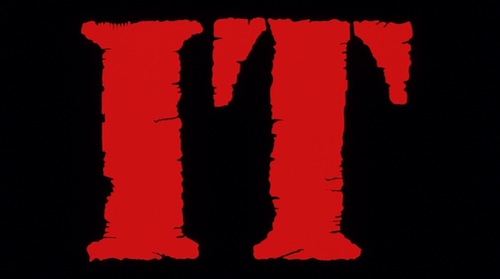
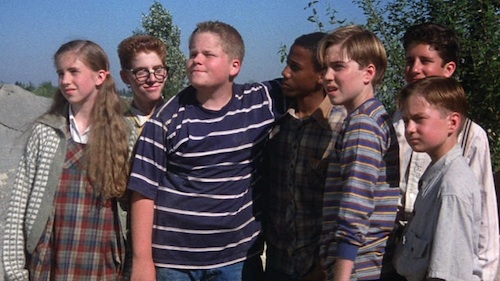
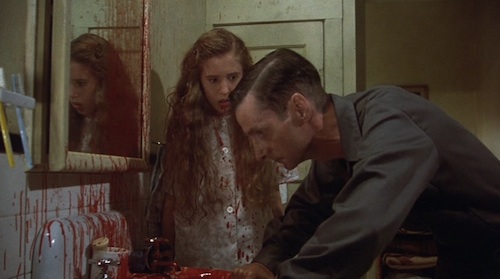
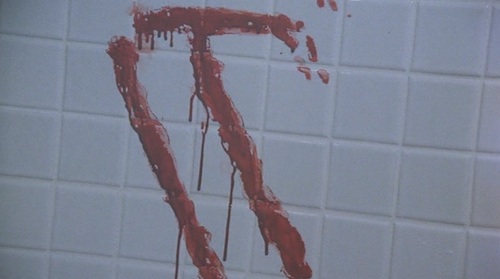
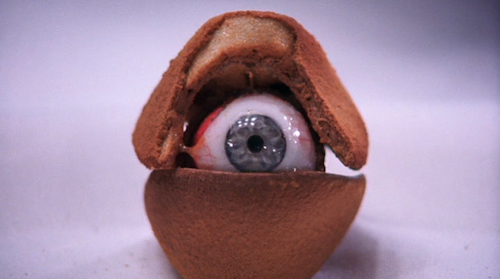
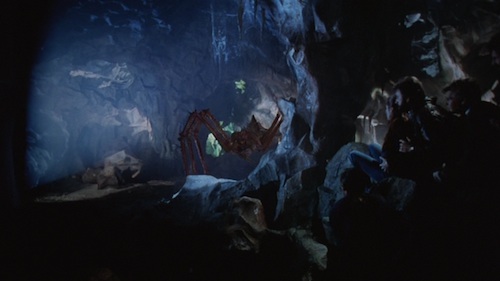
1 thought on “IT (1990)”
Thank God Tim Curry had his Brief and Shinng Moment on Broadway…I always loved him.